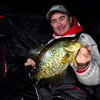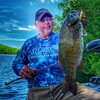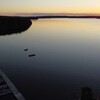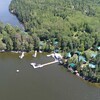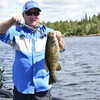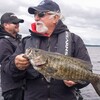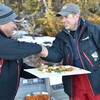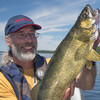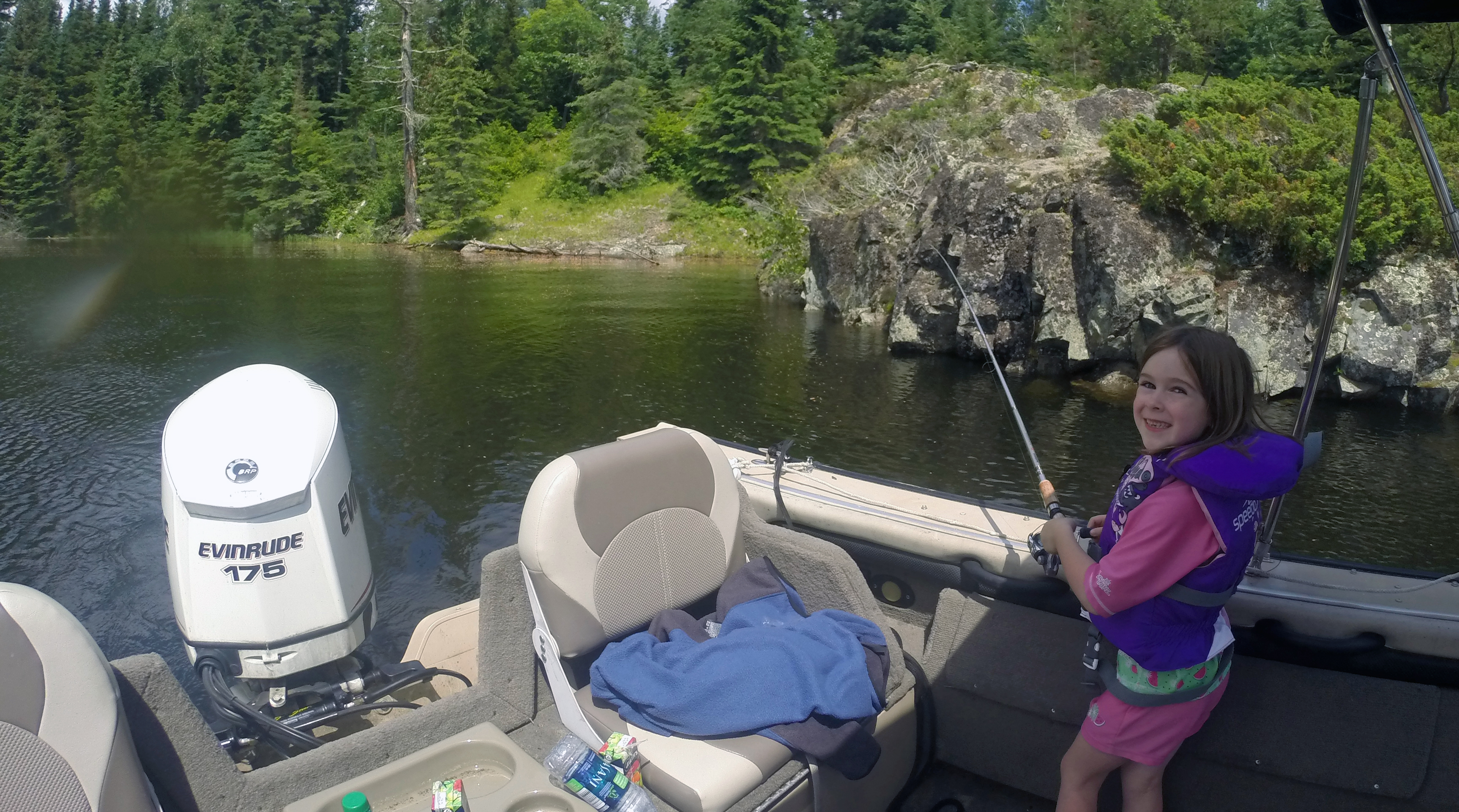
Exploring the Turtle River by Canoe
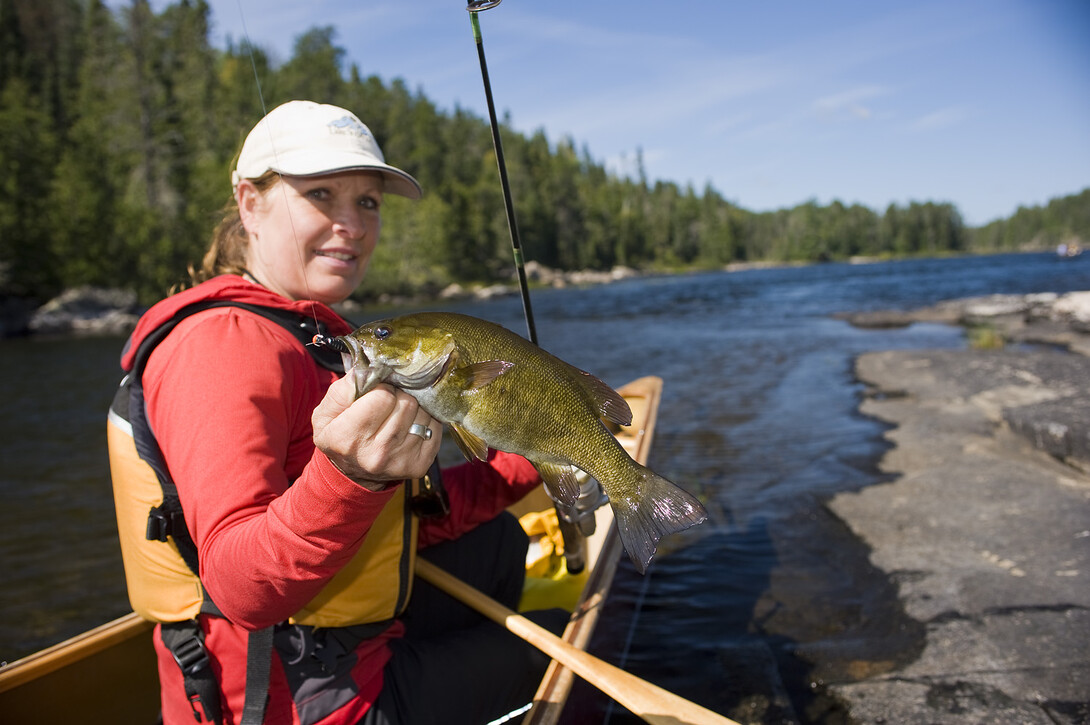
We were able to get the tents up before the downpour, and now our group of four adults and five children is packed together under the protection of a small tarp. Rivulets of water pour over the edge of orange nylon to spill onto the smooth granite rock foundation of our hastily prepared campsite. As miserable as the conditions are, our situation is familiar and comforting. We’ve been paddling with the Simpson family since our girls were tiny, and over the years we’ve all learned to accept the diverse weather that comes with wilderness paddling.
A Timely Campsite
As we slid four canoes into the stained waters of the Turtle River at the Highway 622 bridge, northwest of Atikokan, black clouds were already gathering. As we paddled upstream under a forbidding sky, I watched with pride as our teenage daughters, Islay and Lillian, and the Simpsons -- Jenna, Kiri, and Grace -- took command of their respective vessels. After portaging around several picturesque chutes, we discovered a timely campsite where the river splits around a large rocky island. We hastily pitched tents, rigged a tarp, and fell upon a warm meal with piqued appetites.

By the next afternoon, the sun is warming our backs as we paddle and portage through a profusion of small lakes that will eventually reunite with the Turtle River. After crossing Dibble Lake, we approach a portage around falls and set up camp on the multi-level flat rock site.
Running Logs And Canoes Through History
It’s apparent we are not the first to travel these waterways. A dual sluiceway, engineered with rocks and timbers, gives us a glimpse at the days when the river was used for running logs. But an even deeper conduit into the past is discovered as we paddle past a vertical rock face on Smirch Lake, which holds the faded orange shape of a deer or moose. The ancient Aboriginal pictographs continue with a canoe and paddlers, a turtle, and assorted indistinguishable symbols.
Smirch eventually tapers down and drops into a series of narrows and rapids. The first is particularly daunting, with large standing waves squeezed between a narrow passage. It’s an exciting run for Francine and me in our 18-foot Wenonah and even more exciting for our girls in their shallow 15-foot cedar strip. The moving water also delivers great fishing. Big smallmouth bass nail jigs and plastic, and we harvest half a dozen for tonight’s supper.
Reluctant Homestretch
With the current of the Turtle River behind us and hastened by a tailwind, we return to our first campsite. Where we once shivered under a tarp, we now sunbathe on warm flat rocks and cast topwater poppers from shore for large, aggressive smallmouth. Over the years, we’ve learned that there is a balance between the fair and the foul. And today it isn’t difficult to accept what the great outdoors has to offer.
Recommended Articles

Cast Into the Heart of a Walleye Paradise

20 Years With Fish TV!

Eating Northern Pike

3 Great Ontario Walleye Destinations

Brook Trout Fishing at Dunlop Lake Lodge

10 Facts About Lake of the Woods
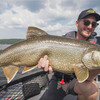
Trophy Lake Trout on Lake Obabika

Top 5 Baits for Smallmouth and Largemouth Bass
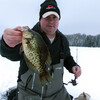
Epic Ice in Northwestern Ontario
Ontario Brook Trout

Best WhiteFish Tactics
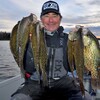
Bivins’ Bounce Crappies
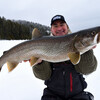
Rigged for Ice Fishing Success

Yellow Perch Egg-Stacy

10 Tips For Ice Fishing Safety

A Whole Lota Lovin'
Top 5 Musky Destinations in Ontario
Top 8 Places to Ice Fish in Ontario
Don’t Be Afraid Of Muskies

